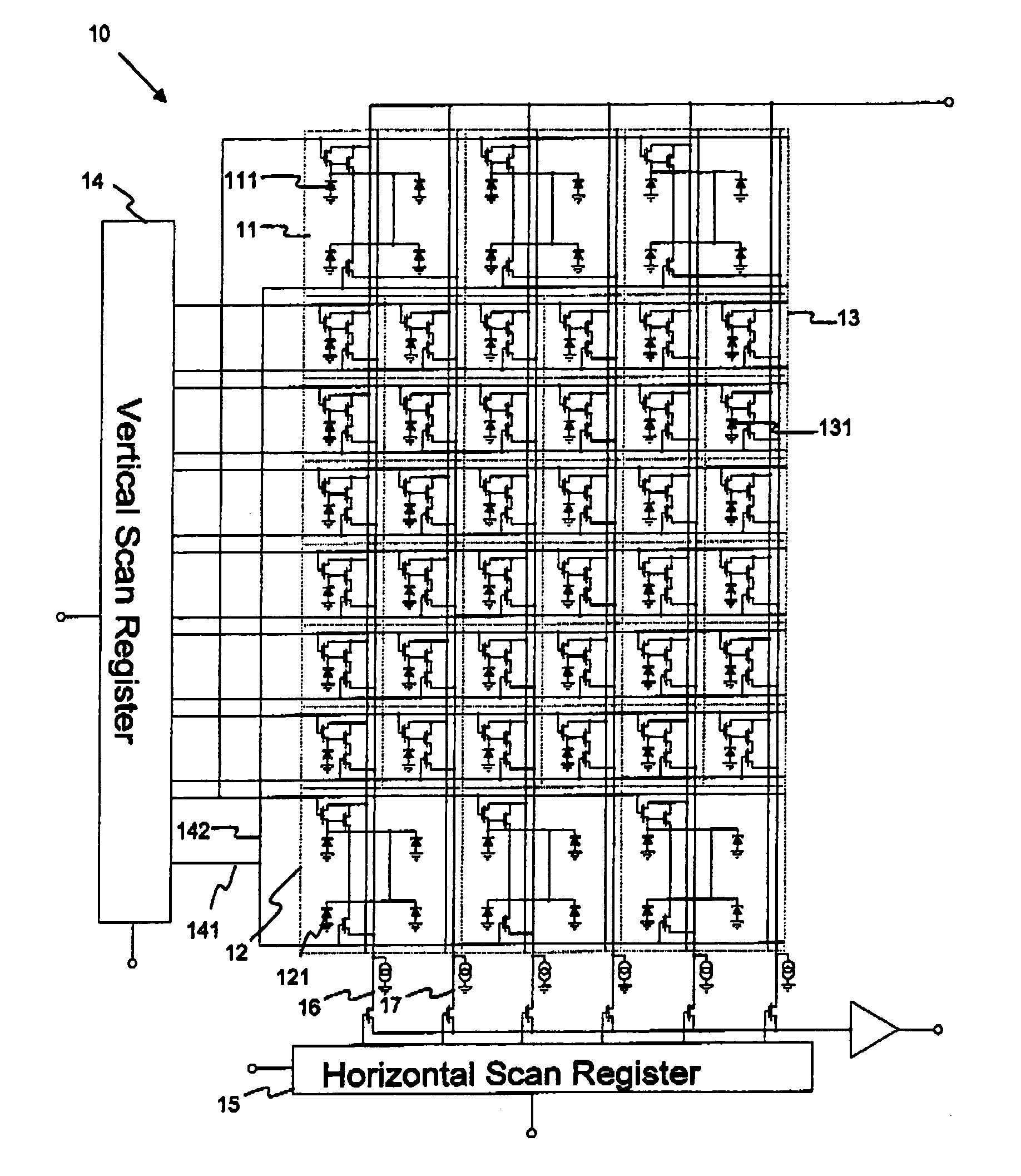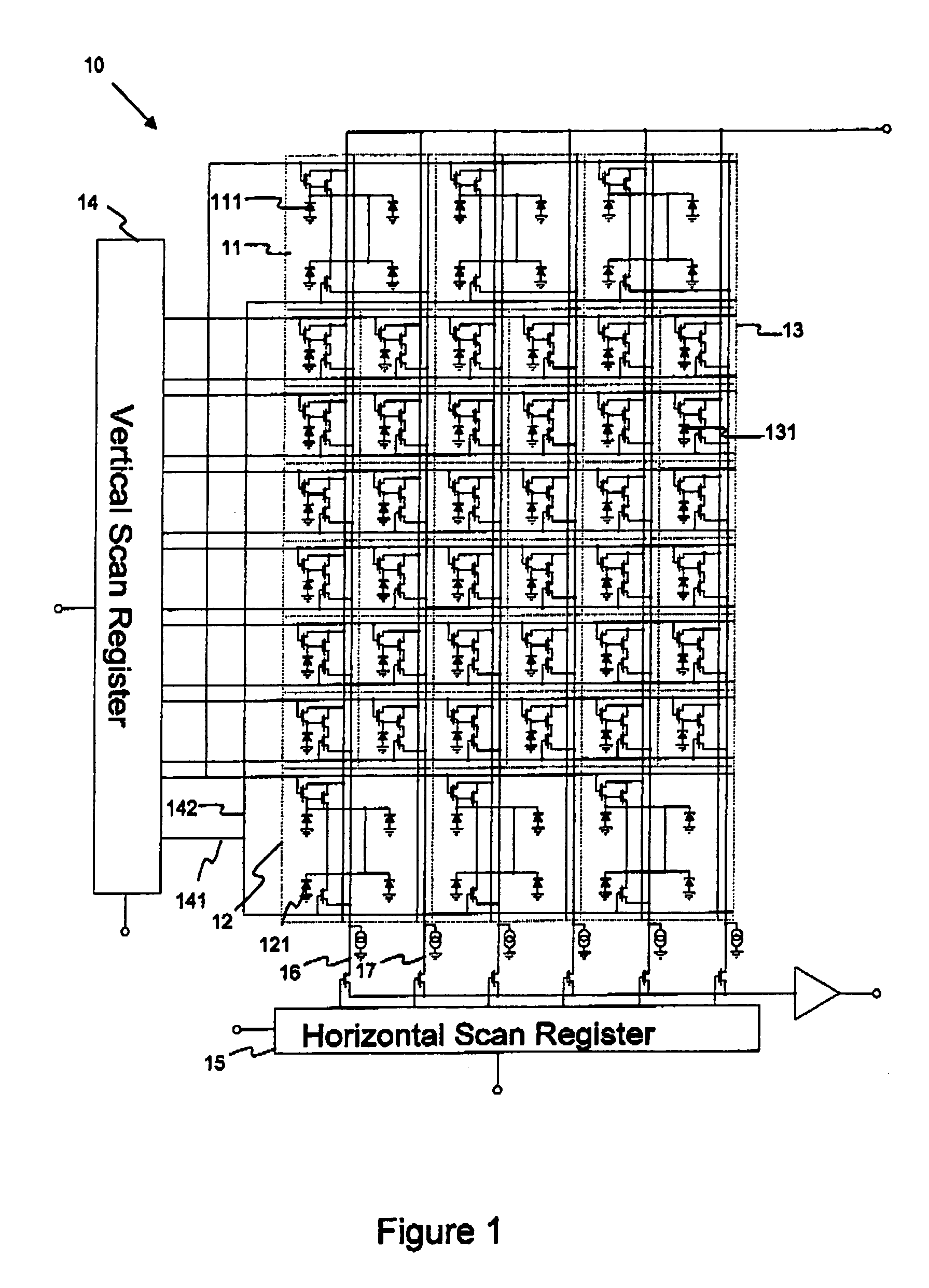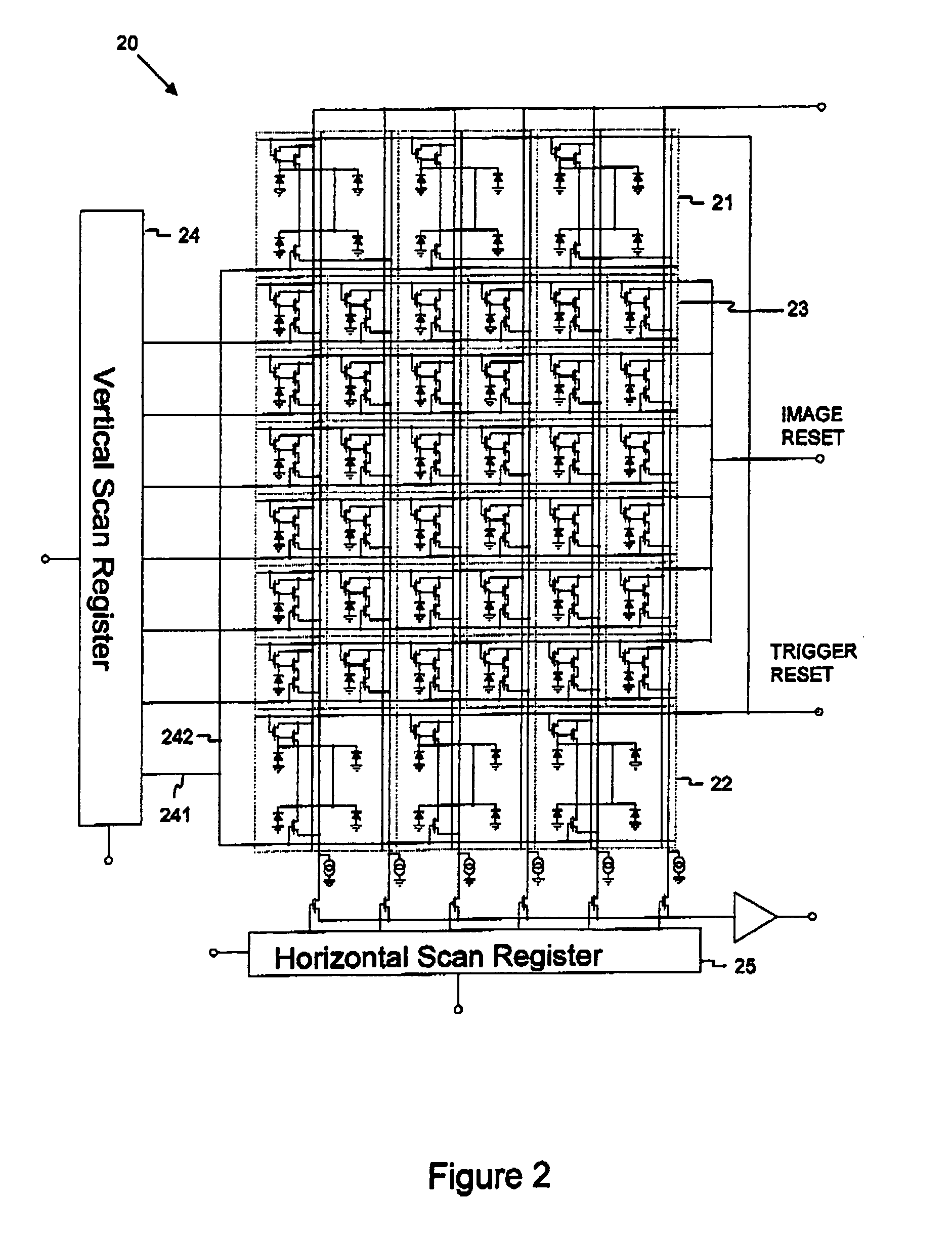Sensor with trigger pixels for imaging of pulsed radiation
a radiation sensor and sensor technology, applied in the field of triggering radiation sensors, can solve the problems of increasing cost and reducing yield, increasing complexity, and esd/emc susceptibility of prior art devices giving false triggers, and achieving the effect of rapid response to detection
- Summary
- Abstract
- Description
- Claims
- Application Information
AI Technical Summary
Benefits of technology
Problems solved by technology
Method used
Image
Examples
Embodiment Construction
[0051] Referring to FIG. 1, a CMOS image array 10 according to the invention has a plurality of rows of image pixels 13, read by a vertical scan register 14 and a horizontal scan register 15 in a known manner. In addition there are provided a top row of trigger pixels 11 and a bottom row of trigger pixels 12. The trigger pixels 11, 12 each occupy four times an area of each of the image pixels and have four photodiodes 111, 121 connected in parallel compared with a single photodiode 131 in the image pixels 13. Otherwise the circuits of the trigger pixels 11, 12 are similar to the circuits of the image pixels 13, but may be optimised differently, as described herein. It will be understood that the drawing is illusive only, and that a practical array would normally have many more pixels than those illustrated.
[0052] The vertical scan register 14 and horizontal scan register 15 may be simply shift registers which offer the least susceptibility to fixed pattern noise from counter logic ...
PUM
 Login to View More
Login to View More Abstract
Description
Claims
Application Information
 Login to View More
Login to View More - R&D
- Intellectual Property
- Life Sciences
- Materials
- Tech Scout
- Unparalleled Data Quality
- Higher Quality Content
- 60% Fewer Hallucinations
Browse by: Latest US Patents, China's latest patents, Technical Efficacy Thesaurus, Application Domain, Technology Topic, Popular Technical Reports.
© 2025 PatSnap. All rights reserved.Legal|Privacy policy|Modern Slavery Act Transparency Statement|Sitemap|About US| Contact US: help@patsnap.com



